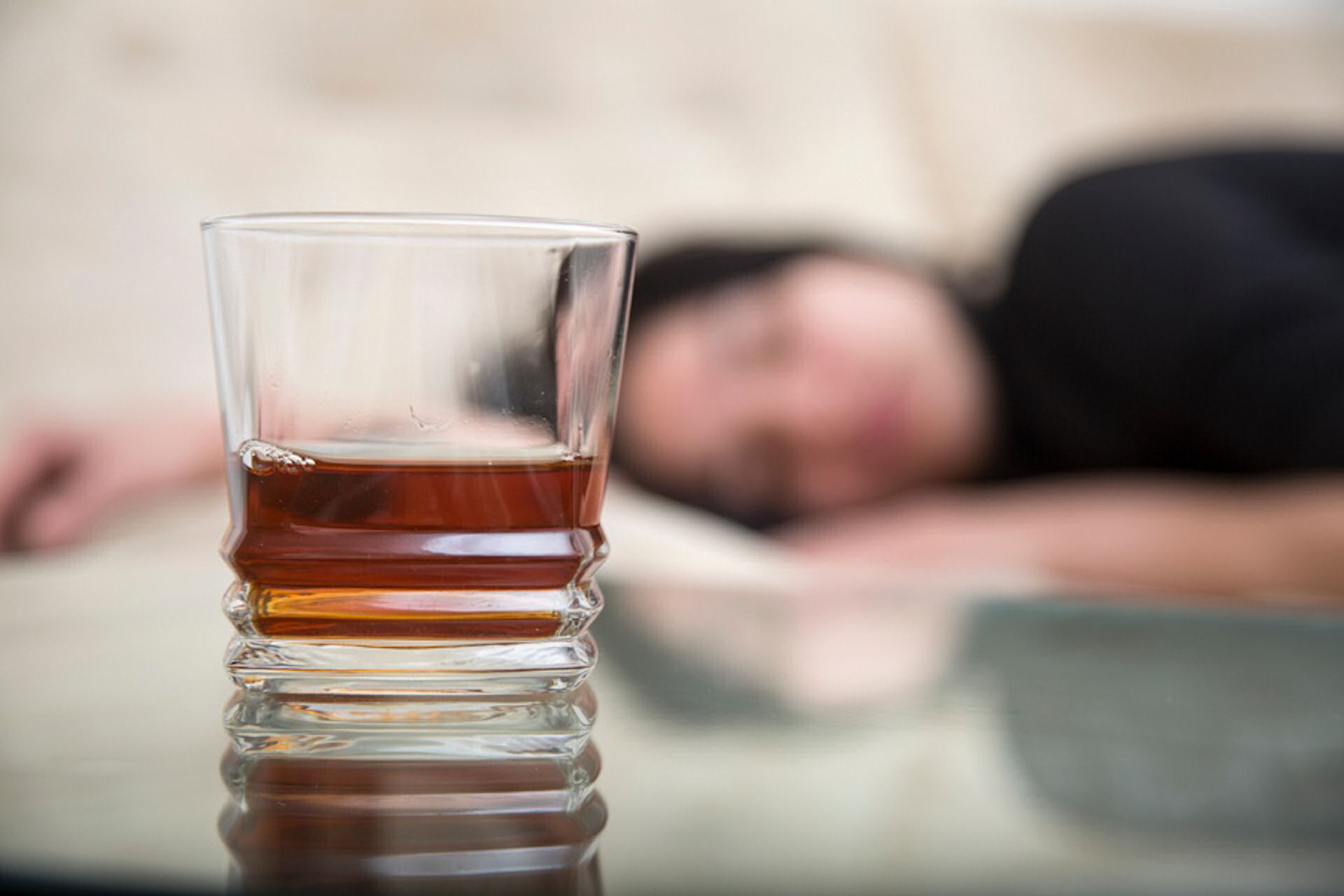What Is Delirium Tremens?
Delirium Tremens (DTs) is a severe manifestation of alcohol withdrawal characterized by disorientation, tremors, anxiety, and hallucinations. Typically, this condition occurs in individuals who are addicted to alcohol and decide to quit cold turkey. This form of withdrawal can happen when you stop drinking alcohol suddenly after a period of excessive drinking, even if you don’t have an alcohol use disorder.
Delirium Tremens is a medical emergency and requires immediate attention. Untreated, DTs can lead to seizures, stroke, or a heart attack. Additionally, a person who has DTs may need to attend alcohol detox and receive addiction therapy and counseling services after receiving physical treatment for the condition.
Symptoms of Delirium Tremens
The symptoms of delirium tremens vary from person to person. When experiencing DTs, you may feel nauseous and feverish. As a severe form of withdrawal, this condition does share some of the same symptoms of regular withdrawal.
You may even also experience tremors, which are a defining characteristic of delirium tremens, but not exclusive to this type of withdrawal. What sets DTs apart from typical withdrawal symptoms is delirium or a state of confusion. If you’re experiencing DTs, you will feel confused, disoriented, and unsure of where you’re at.
Common symptoms of delirium tremens include:
- Being easily agitated
- Feeling disoriented
- Inability to relax
- Having a fast heartbeat
- Experiencing tremors (shaking of the hands, head, arms, or legs)
- Sweating excessively
- Experiencing high blood pressure
- Getting a fever
- Having seizures
- Having auditory or visual hallucinations
If you’re experiencing these symptoms or have concerns, it is important to seek medical attention immediately. A medical professional can assess you, provide a diagnosis, determine whether you have delirium tremens, and recommend the best course of action regarding your treatment.
Risk Factors

Several risk factors increase the likelihood of developing this life-threatening condition of delirium tremens. The largest risk is heavy and prolonged alcohol use. Drinking large amounts for a long time makes it more dangerous to stop drinking abruptly. Using other substances while drinking can also increase your risk. Opioids, benzodiazepines, and prescription medications can cause symptoms similar to DTs and also lead to the condition if mixed with alcohol.
There are some preexisting conditions that pose significant risks as well. Genetics can play a role because if you have a family history of alcohol use disorder, this increases your risk. Having past experience with alcohol withdrawal can worsen symptoms when you’re in withdrawal again. This is one reason that relapse prevention is such a crucial part of alcohol addiction treatment.
Your physical health is also a potential risk factor. People who are older may have weaker central nervous symptoms, putting them at higher risk. Poor nutrition also weakens the body and a weak immune system also increases your risk.
How Much Do You Have To Drink To Get Delirium Tremens?
Delirium Tremens occur in people who drink excessively every day for several months. For example, two cups of hard liquor regularly for months would increase your risk of developing DTs. A bottle of wine, or seven or more pints of beer would also be a dangerous amount that could lead to DTs.
The length of time you use alcohol can also lead to developing this condition. Heavy alcohol use for many years weakens your central nervous system and can make it more difficult to stop drinking.
How Long Do Delirium Tremens Last?
Delirium tremens usually last for two or three days. However, your symptoms can last for longer. Some experience DTs symptoms for a week or more. This condition presents itself usually on the third day after completely stopping alcohol use.
Because of the severity of delirium tremens, if you plan to quit drinking alcohol after having used the substance for a long time, it’s safest to seek professional help when trying to stop. A detox center can ensure that you receive treatment for withdrawal symptoms while also helping you quit drinking.
What is the Timeline of Delirium Tremens?
The timeline of delirium tremens follows a specific progression of symptoms but may vary depending on an individual’s alcohol use and medical history. Here is how you can expect this condition to change over time:
6-48 Hours
The symptoms of alcohol withdrawal may occur as early as six hours after you quit drinking. At first, you may experience mild symptoms such as sweating, nausea, and anxiety. It’s best to go to the doctor and seek medical attention early when you first start experiencing withdrawal symptoms. Early intervention with the condition can help prevent delirium tremens and lessen the severity of your symptoms.
48-72 Hours
Two to three days after you stop drinking, you may experience symptoms of delirium tremens, such as hallucinations, agitation, and confusion. The mild symptoms of withdrawal you experienced before this may not be as concerning and easier for you to ignore, but you’ll definitely notice these symptoms and should seek medical intervention if you haven’t already.
5 Days
Between three and five days, the condition of delirium tremens will peak. During this time, you may still be experiencing previous symptoms, such as anxiety, tremors, or confusion. The peak of DTs includes rapid heart rate, fever, and seizures. All of these symptoms can cause complications that worsen your condition or lead to long-term effects.
5-7 Days
After five to seven days, the symptoms of DTs may begin to subside. Even with medical treatment, you may still experience symptoms such as anxiety and tremors for several more weeks. The best thing you can do for this condition is to seek medical treatment that will prevent your condition from worsening.
What Medications Are Used to Treat DTs?
To treat delirium tremens, medical professionals usually administer benzodiazepines or antipsychotics. These medications treat the worst symptoms of DTs, such as anxiety, tremors, and hallucinations. Benzodiazepines calm the central nervous system.
For DTs, benzodiazepines reduce anxiety and can prevent the further progression of this condition. Antipsychotics are typically used to treat disorders such as schizophrenia and bipolar disorder. But in the treatment of DTs, they reduce symptoms of hallucinations, delusions, and agitation. They also prevent complications, such as cardiovascular instability and hyperthermia.
In addition to these medications, doctors may prescribe intravenous fluids to treat dehydration or malnutrition. If the patient has severe enough tremors, they may be sedated to prevent injury. And after this medical treatment, people who have DTs receive therapy for their mental health. Alcohol addiction is a mental health disorder that can lead to DTs.
Delirium Tremens isn’t a condition that can be reversed. It’s potentially fatal if not treated in a timely manner, but isn’t a permanent condition. The symptoms can be treated with medication, which also prevents the progression of the condition and any complications that may occur as a result of the symptoms.
How To Prevent Delirium Tremens

The most effective way to prevent DTs is to avoid heavy drinking and long-term alcohol use. If you struggle with alcohol use and feel a dependency on this substance, you can seek treatment for alcohol use disorder. A treatment center for drug and alcohol abuse can help you safely quit drinking and provide you with psychological treatment to prevent relapse.
The first step in treatment is detoxification, which cleanses your body of the toxins from alcohol and drugs. Detox is a medically assisted withdrawal and is safe. After detox, you’ll be recommended for inpatient or outpatient rehabilitation. These programs often offer therapy to help resolve the mental causes and effects of alcohol use disorder. Individuals participate in group therapy as well as one-on-one sessions with a therapist to learn coping strategies and identify the root causes of their addiction.
After either inpatient or outpatient treatment, individuals are encouraged to join support groups so they can continue to work toward sobriety goals. Support from peers is very beneficial during recovery because they can provide motivation and share similar experiences that may help you stay on track for making a full recovery.
Path To Recovery Can Assist With Alcohol Addiction
At Path To Recovery, we’re dedicated to helping individuals overcome their battles with addiction. If you or someone you know struggles with alcohol use, come to our facility in Los Angeles, California for help. We help detox from alcohol and drugs and create a treatment plan for rehabilitation.
It’s a long road to recovery, but our team offers support and a personal touch in addiction care so that every individual who comes to us for treatment can find long-lasting sobriety. Contact us about alcohol addiction treatment and start your path to recovery today!





